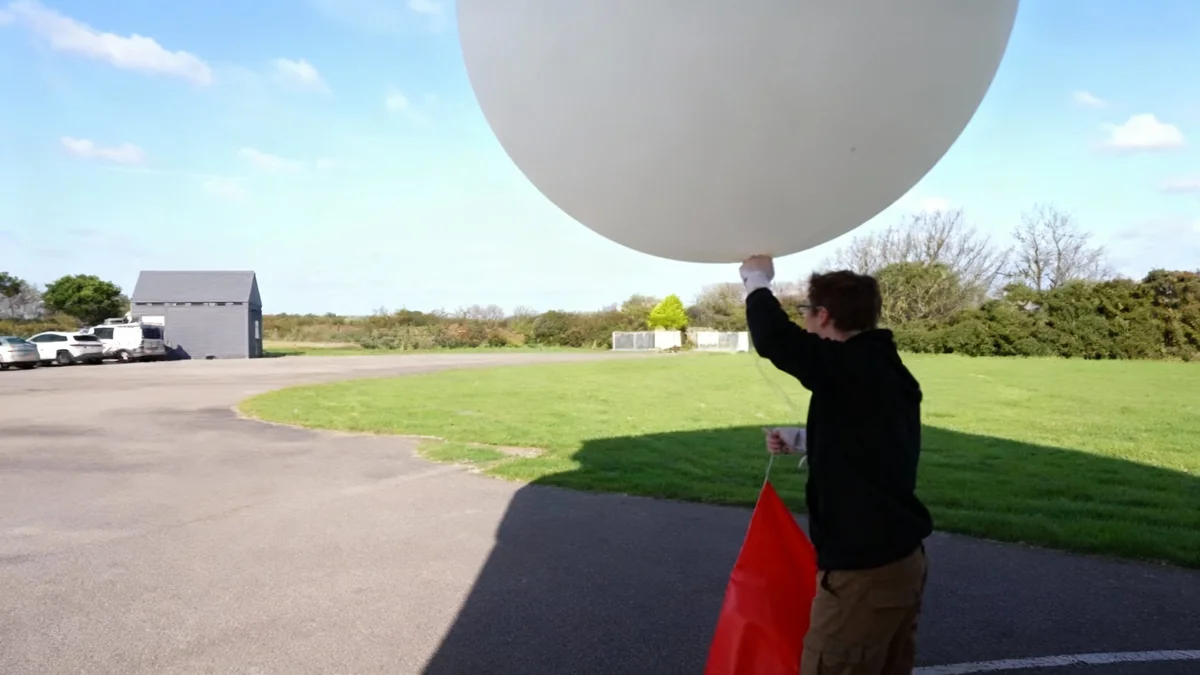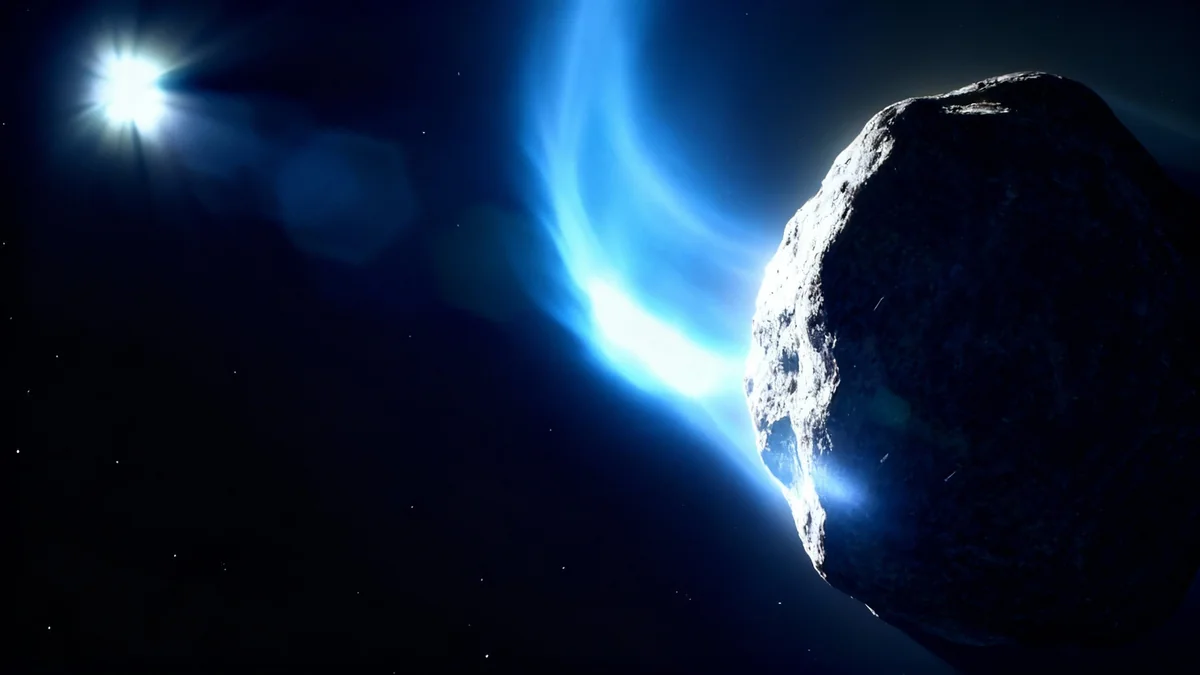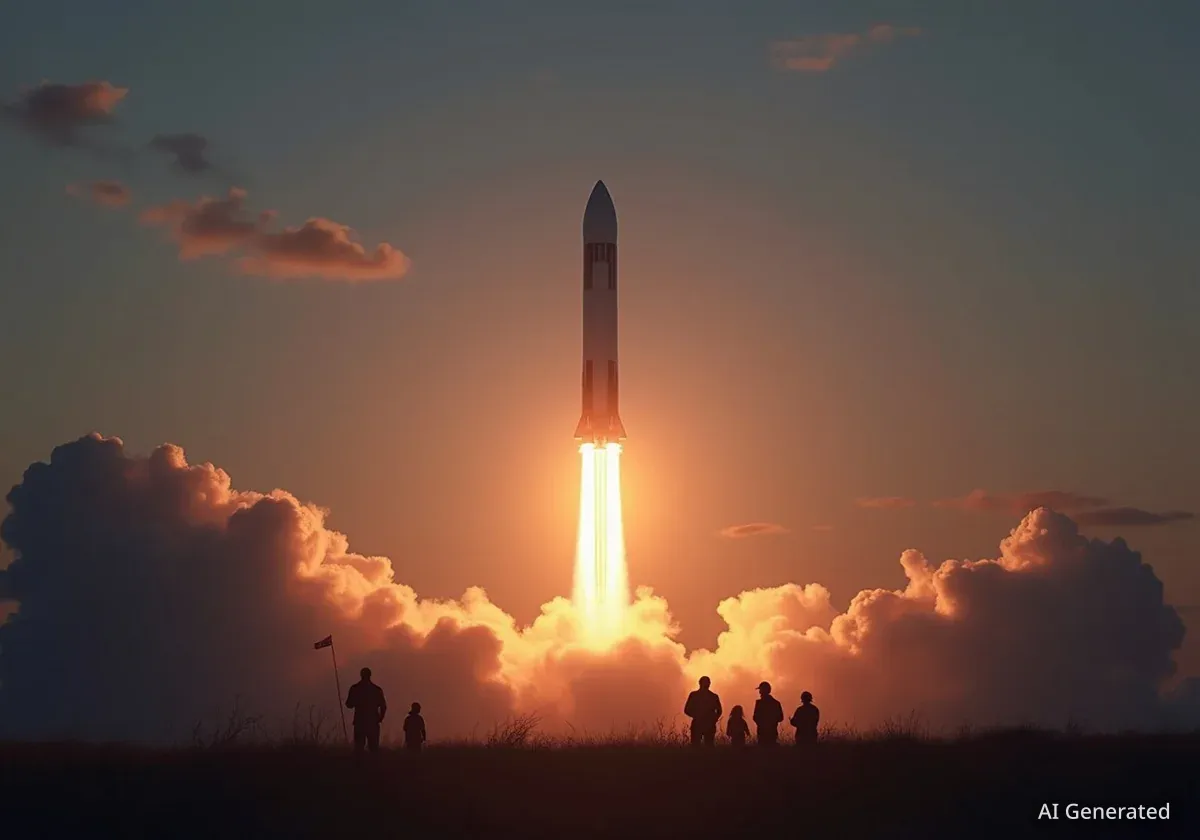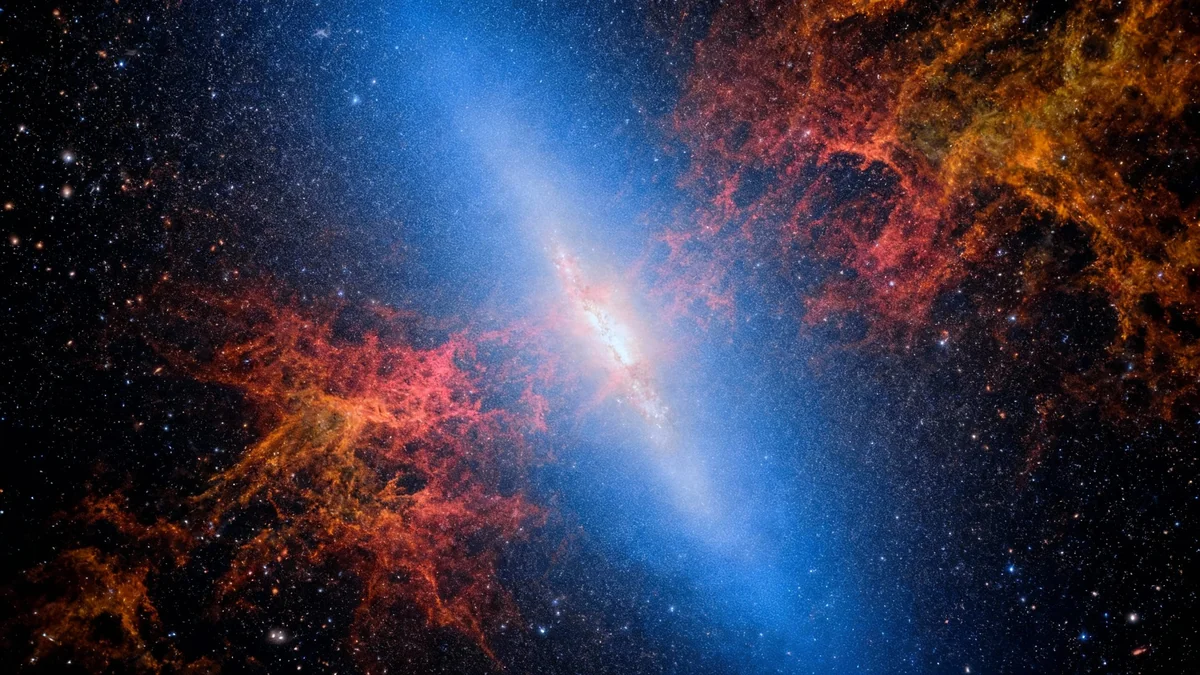The UK's Met Office has initiated a new project to enhance space weather forecasting by launching radiation sensors on high-altitude weather balloons. The launches, which took place in Cornwall and the Shetland Islands, aim to collect crucial data from over 100,000 feet to better understand the impact of solar events on Earth's atmosphere.
Key Takeaways
- The Met Office launched radiation sensors on weather balloons from Camborne, Cornwall, and Lerwick, Shetland.
- These balloons will ascend to altitudes exceeding 100,000 feet (30,480 meters) to gather atmospheric radiation data.
- The project is a collaboration with the University of Surrey's Space Centre, which developed the compact sensors.
- Data collected will help improve forecasts for industries like aviation and energy, which are vulnerable to space weather.
New Initiative to Monitor Atmospheric Radiation
On Friday, the Met Office deployed a new type of monitoring system from two strategic locations in the United Kingdom. One weather balloon carrying a specialized radiation sensor was released from a site in Camborne, Cornwall, while a second was launched from Lerwick in the Shetland Islands. A third, coordinated launch was also conducted by the Dutch national weather service in The Netherlands.
These balloons are designed to travel to the upper reaches of the atmosphere, reaching an altitude of more than 100,000 feet. At this height, they can capture live observations of radiation levels, providing a more complete picture of how space weather affects the atmospheric column from near-space down to the ground.
The information gathered will be cross-referenced with data from ground-based monitoring equipment that was installed at the Camborne site earlier this year. This comparison is expected to significantly advance the understanding of atmospheric radiation dynamics.
What Is Space Weather?
Space weather refers to the changing conditions in space, primarily driven by activity from the Sun. This includes solar flares, coronal mass ejections, and solar wind, which can send streams of energetic particles toward Earth. These events can disrupt satellites, power grids, and communication systems, making accurate forecasting essential for modern infrastructure.
Advancing Forecasting for Critical Industries
The primary goal of this initiative is to improve the accuracy and reliability of space weather forecasts. According to the Met Office, understanding radiation levels at different altitudes is vital for sectors that operate within or rely on the atmosphere.
Krista Hammond, the senior space weather manager at the Met Office, highlighted the project's significance.
"Space weather monitoring is in its infancy compared to meteorology, so this project will provide a huge leap forward in terms of our understanding of how space weather events impact radiation levels through the Earth's atmosphere."
Hammond further explained that the data is particularly important for the aviation and energy industries. For example, high-altitude flights can be exposed to increased radiation during solar events, and power grids can experience surges. Better forecasting allows these industries to take protective measures.
Innovative Technology from University of Surrey
The compact radiation monitors attached to the balloons were developed by the University of Surrey Space Centre. This technology is an evolution of equipment the university has used for decades to measure atmospheric radiation.
A Legacy of High-Altitude Monitoring
Professor Keith Ryden, director of the Surrey Space Centre, noted that the new detector is based on systems they already use on aircraft. The university has a long history in this field of research.
"We have been doing these kinds of measurements for a long time – our very first instrument flew on Concorde back in the 1980s and recorded several space weather events," Professor Ryden stated.
He added that the current system is an advancement on previous models. "We now have an even lighter system designed for rapid balloon launches, reaching altitudes more than twice that of typical commercial aircraft levels - giving us a new way of tracking radiation levels through the atmosphere."
Project Details at a Glance
- Launch Locations (UK): Camborne, Cornwall & Lerwick, Shetland
- Target Altitude: Over 100,000 feet (30,480 meters)
- Technology: Compact radiation detectors
- Key Partners: Met Office, University of Surrey Space Centre
- Objective: To improve space weather forecasting and atmospheric radiation models.
The Future of Space Weather Prediction
As society becomes more dependent on technology susceptible to solar activity, the need for precise space weather forecasting grows. Projects like this one represent a critical step in building more resilient infrastructure.
By deploying sensors directly into the upper atmosphere, scientists can bypass some of the limitations of ground-based and satellite observations. This direct measurement provides a new layer of data that can be integrated into predictive models, ultimately leading to more timely and accurate warnings for a range of industries.
The collaboration between a national meteorological service and a leading academic institution demonstrates a unified approach to tackling the challenges posed by space weather. The data from these initial launches will pave the way for a better understanding of the complex interactions between the Sun and Earth's environment.





